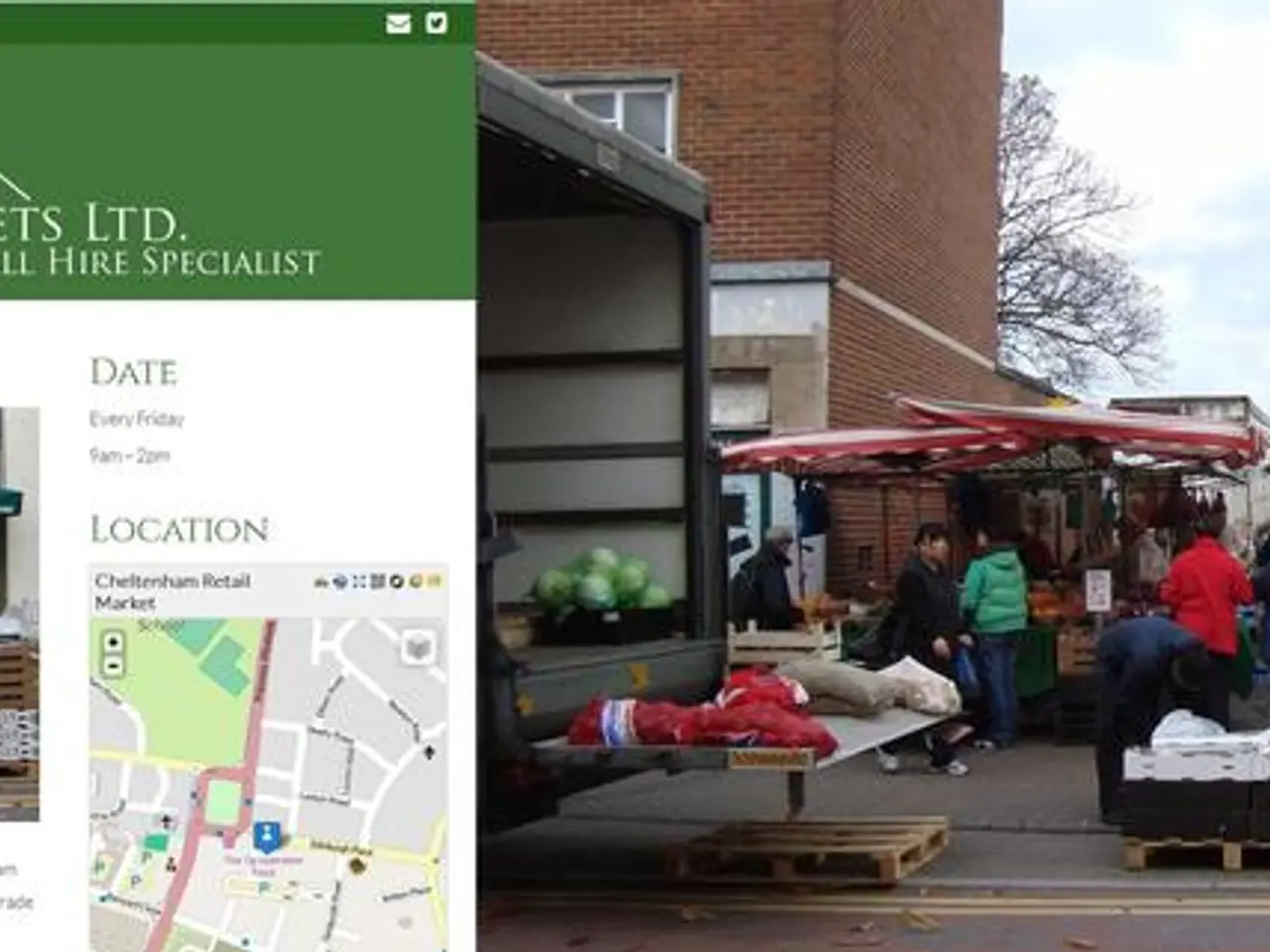Holiday season's impact on retail industry in 2021
In the tumultuous year of 2020, the retail sector faced unprecedented disruptions due to the COVID-19 pandemic. The crisis led to a significant initial decline in retail sales, with a sharp 17.0% drop in Australia during nationwide lockdowns in April. Globally, retailers grappled with store closures, shifts in consumer demand, economic uncertainty, and supply chain interruptions [1][2].
However, some retailers, particularly discount retailers, managed to weather the storm and even experience sales growth as consumers shifted their spending patterns [5]. Big box retailers like Target and Walmart were well prepared to help customers shop despite the pandemic, notching surprisingly robust sales in November (up 10.3%) and December (up 6.7%) [3].
Rapid acceleration of online shopping became critical, with many retailers swiftly expanding or establishing online platforms and click-and-collect services [1]. Food and beverage outlets pivoted to delivery platforms to maintain sales when physical outlets were closed [1]. Brands restructured operations, including permanent store closures and workforce reductions to manage costs amid declining revenues [2].
Retailers strengthened vendor relationships and supply chain flexibility to navigate production and distribution uncertainties [4]. Emphasis on alternative product offerings addressed shifting consumer preferences and shortages, such as soaps over hand sanitizers [3]. Some companies used the crisis to focus on future-proofing with digital transformation and sustainability considerations [2].
The holiday season of 2020 was particularly challenging for department stores, with sales plummeting 19.1% in November and 22% in December. However, retailers coaxed customers to start shopping in October due to expected shipping delays from higher online sales [4].
Despite the disappointing revenues, retailers experienced upside profit surprises during the holiday season [5]. Retailers maintaining tight inventory into the next year are well situated to drive strong full price sell through. Goods outlays are expected to have a much slower year in 2021 than what was seen during 2020 [6].
The Biden administration is expected to distribute further vaccines, but the pandemic is still expected to shape consumer behavior in 2021. Analysts expect that pent-up demand could fuel retail sales this year, but much of that spending is expected to go towards services and entertainment as people come out of their homes and the economy improves [7].
Customers who have grown accustomed to online shopping during the pandemic are expected to maintain a hybrid approach to shopping as restrictions ease. Some clothing trends that emerged during the pandemic are expected to continue even after things return to normal [8]. Spending at the companies tracked by Facteus grew 37% year over year during the week ended Jan. 10, up from the 19% growth in the prior week [9].
Retailers of all sizes offered additional fulfillment services like curbside pickup, BOPIS, and home delivery during the pandemic [10]. Sales of electronics fell 10.2% in November and 15.7% in December due to a surge in sales earlier in the year [11]. Despite the challenges, the retail sector has proven its resilience and adaptability in the face of the COVID-19 pandemic.
References:
- Retail Dive, "Retailers' strategic adaptations during the pandemic," 2020
- McKinsey & Company, "COVID-19: Navigating the crisis in retail," 2020
- The New York Times, "As the Pandemic Spreads, Retailers Struggle to Keep Up," 2020
- The Wall Street Journal, "Retailers Prepare for Holiday Sales Boom Amid Pandemic," 2020
- CNBC, "Retailers report surprisingly strong sales for the holiday season," 2020
- Bloomberg, "Retail Sales in U.S. Rose 5.8% in January, More Than Forecast," 2021
- CNBC, "Retail sales expected to rebound in 2021 as consumers emerge from their homes," 2021
- Vogue Business, "Sustainable fashion trends that will endure beyond the pandemic," 2020
- Facteus, "Spending at Companies Facteus Tracks Grew 37% Year Over Year During the Week Ended Jan. 10," 2021
- Retail Dive, "Retailers offer new fulfillment services amid pandemic," 2020
- CNBC, "Electronics sales fell 15.7% in December, according to Adobe Analytics," 2020
- War was not declared, but the retail industry faced a significant battle in 2020 as a result of the pandemic, leading to a policy focus on supporting and adapting to the crisis.
- AI technology played a role in helping retailers navigate the pandemic, with many companies focusing on digital transformation to improve their online presence and supply chain flexibility.
- The pandemic led to shifts in consumer demand, with people preferring to shop online and rely on delivery services for essential items like food and electronics.
- Amid the economic uncertainty, the finance and business sectors were also impacted, with retailers having to make tough decisions such as store closures and workforce reductions.
- The retail sector proved its resilience and adaptability during the pandemic, with some companies experiencing sales growth and the rapid acceleration of online shopping becoming critical.
- The economy faced a challenging year in 2020, but the markets are expected to rebound in 2021 as the Biden administration distributes vaccines and people begin to emerge from their homes and return to shopping in services and entertainment industries.
- The pandemic led to a surge in sales earlier in the year for certain retailers, but many are experiencing upside profit surprises during the holiday season as consumers continue to shop online.
- Some retail trends that emerged during the pandemic are expected to continue beyond the pandemic, such as an increased focus on sustainability and a hybrid approach to shopping.
- Travel was heavily impacted by the pandemic, but some retailers have offered additional fulfillment services like curbside pickup, BOPIS, and home delivery to accommodate customers who are unable to leave their homes.




